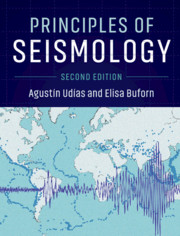Ground motions produced by earthquakes and recorded by seismographs, as explained in Chapter 3, constitute the basic observations for the quantitative study of earthquakes. In order to formalize and quantify the information about the motion produced by earthquakes we use the principles and equations of the mechanics of continuous media. For this purpose, we approximate the Earth by a continuous deformable medium to which the equations of mechanics can be applied.We start by recalling some of the basic ideas on the mechanical behavior of continuous media. These ideas constitute the fundamentals necessary to understand the motion produced by earthquakes. It is, then, very important to understand these in order to quantify and formalize our knowledge. First we explain the basic concepts of displacement, strain, stress, and elasticity coefficients in order to proceed to presentation of the fundamental equations of motion, with consideration of energy and heat release.
Displacement, strain, and stress
A continuous medium is an idealization of a material in which the distance between two contiguous points can be made infinitesimally small. In this idealization, the granular structure of the materials of the Earth and their molecular and atomic nature are not considered. In a continuous medium the term particle is used to mean a geometric point without dimensions. Density and mechanical properties of continuous media are considered to be continuous functions of the spatial coordinates and time. Motion of points in a continuous medium can be described by what are known as Lagrangian and Eulerian descriptions (after Leonhard Euler and Joseph Louis Lagrange). In seismology we use the linearized theory of elasticity adopting the Lagrangian viewpoint, which considers points in the medium as individual moving particles (Dahlen and Tromp, 1998, 26–36).
The study of the mechanical behavior of continuous media can be traced back to the discovery in 1660 by Robert Hooke of a linear law that relates applied forces and deformations in an elastic body and its applications formulated by Edmé Mariotte at around 1680. The first studies on the behavior of elastic materials were those of Daniel Bernoulli, Euler, Lagrange, and Charles Coulomb. In 1827, Claude-Louis Navier established the general equations for equilibrium and vibration in elastic solids. This work was continued by Augustine Louis Cauchy, Siméon-Denis Poisson, Gabriel Lamé, Gustav Robert Kirchhoff, William Thomson (Lord Kelvin), John William Strutt (Lord Rayleigh), Augustus E. H. Love, and Horace Lamb, among others.
